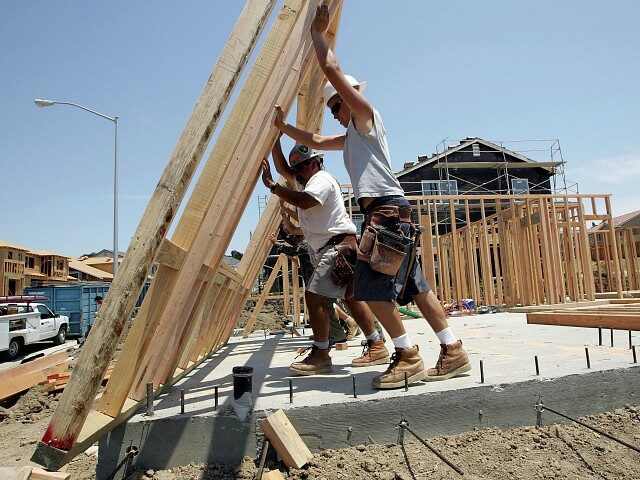If the housing market is in a recession, why are homebuilders still employing so many construction workers?
Last week we learned that new home construction declined again in December, the fifth straight monthly decline. Total residential housing starts fell 0.5 percent to a 1.43 million annualized rate. Single-family homebuilding dropped to an annualized 828,000 rate, the lowest since May 2020. Applications for building permits, a proxy for future construction, plunged 11.2 percent to an annualized rate of 1.34 million units. Permits for the construction of single-family homes dropped 7.1 percent to the slowest pace since 2020.
Yet at the start of December, there were 388,000 job openings in construction. That is down from the record high of 440,000 job vacancies in construction in April of last year, but it still a very high level of openings by historical measures. The housing starts numbers show that builders have cut back on projects, and the permits numbers show that builders are scaling back ambitions for future building. Yet they are still looking for workers at a record level.

The chart below plots total employment in construction against housing starts. As starts began declining in April of last year, employment in construction has basically held up. Indeed, employers added construction to payrolls in December according to the Labor Department. On a seasonally adjusted basis, builders hired 3,100 more workers last month.

There may be some weird things going on with seasonal adjustments. Ever since the pandemic struck, we have seen seasonal adjustments confounded by changes in economic behavior brought on by the pandemic or at least coincident with it. In this case, however, it’s hard to pinpoint a behavioral change in construction that would throw off normal seasonality. It has been unusually warm in much of the country this winter, so that may have played a role. Before seasonal adjustments, however, employment in residential construction fell by just 6,900, or 0.76 percent. That’s hardly the kind of retrenchment in payrolls you would expect in a sector of the economy that everyone says is in a recession.
Completing the Answer
One of the features of the post-pandemic housing boom was the growth of the number of houses that were under construction but not completed. Even though employment in construction grew rapidly, housing starts outpaced payrolls. Materials for building also went through price surges that encouraged builders to delay projects until prices came back down. The number of homes under construction rose to levels not seen since the housing bubble of the early oughts.

These partially built homes are likely fueling demand for labor now. As Bill McBride of Calculated Risk points out in a recent newsletter, last year was a record high for housing completions. Many of those part-built houses finally got finished. It takes around seven months for a single family housing start to be completed, according to McBridge, and 16 months for apartment buildings to be completed.
Under these circumstances, we should expect construction employment to be a lagging indicator. It can hold up for quite sometime, as builders finish the projects they began and the houses they sold during the boom. McBride forecasts that this year will be another record year for completions, which would imply that the labor market will remain resilient.
Trouble for the Fed
Housing is famously the most interest rate sensitive sector of the economy. It is thought to be one of the main channels of transmission of monetary policy through the rest of the economy. Yet as we can see above, when the Fed is targeting the labor market to combat inflation, even in housing the lag between higher rates and softer employment numbers can be quite long.
Eventually, the decline in starts is likely to weigh on construction employment. But it may be several months or even into next year before we see demand for builders shrink significantly.

COMMENTS
Please let us know if you're having issues with commenting.